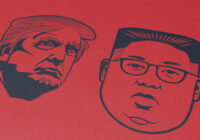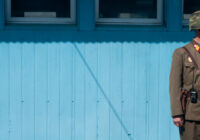A revised and improved Cuba model for denuclearizing North Korea might have gotten a more receptive ear from Pyongyang.
Last month, President Donald Trump’s national security adviser, John Bolton, proposed that the model for denuclearization of North Korea was “the Libya model from 2003, 2004.” In late 2003, the Libyan dictator Muammar Gaddafi agreed to give up his weapons of mass destruction, including a nascent nuclear development program. Libya also agreed to comply with the requirements of the Treaty on the Non-Proliferation of Nuclear Weapons and the Biological Weapons Convention. Following the decision, Libya returned to semi-respectability among the world community. Sanctions were lifted, and Libyans expected economic prosperity to ensue, which it did not.
Following the eruption of the Arab Spring in Libya in 2011, local opposition forces began to organize against the long-ruling dictator. With the outbreak of civil war and a concerted NATO bombing campaign, pro-Gaddafi forces lost the upper hand and surrendered the capital of Tripoli in September. In October, Gaddafi, then on the run, was captured by rebel forces and brutally killed. So, it isn’t too surprising that the North Korean government was not thrilled with the Bolton analogy. Even the White House felt obliged to walk back the national security adviser’s ill-advised remark.
His first fault is obvious. If there were an argument for keeping his nuclear weapons, North Korean leader Kim Jong-un needn’t look far: It’s Libya. The UN Security Council, which had authorized NATO’s military intervention against Gaddafi forces, and NATO might have looked at the Libyan crisis of 2011 much differently had the Libyan tyrant retained his WMD.
A second fault with Bolton’s diplomatic malapropism was the difference in the level of sophistication of the dismantled Libyan WMD effort and that of a still very active North Korean program. Libya was years, if not decades, away from actually having anything approaching what North Korea has today: fully tested and operational nuclear weapons and the means to deliver them. Gaddafi’s was a wayward seed planted in a parched desert compared to Kim’s thriving orchard. North Korea is a nuclear power now.
Cuba Model
Perhaps what Bolton should have proposed was an improved Cuba model. In the fall of 1962, an American spy plan confirmed the Soviet Union’s construction of ballistic missile sites on the island of Cuba, a mere 90 miles from the US mainland. Following Cuban dictator Fidel Castro’s request, the USSR had been planning to install nuclear-tipped missiles on the island. Castro believed that nukes on the island would forestall another US attempt to invade Cuba and overthrow him after the failed Bay of Pigs invasion.
The US imposed a comprehensive naval blockade of Cuba, and there began 13 days of tense brinkmanship between the US and the USSR, and their respective leaders, President John Kennedy and Premier Nikita Khrushchev. During the face-off, the world waited in anxious anticipation of a superpower nuclear confrontation. The standoff was diffused, however, when Khrushchev ordered the Soviet vessels delivering the actual missiles to return to the Soviet Union in exchange for the removal the blockade and a US pledge not to invade the island nation.
Though released classified documents from the period suggest that President Kennedy may have subsequently hedged his pledge on no invasion, both leaders and their successors stuck to the agreement. The USSR withdrew its missiles and never sought to return them to Cuba. And the US, much to the disappointment of some hardliner anti-Castro elements of Congress, never invaded Cuba. Had Bolton proposed Cuba as the model, Kim might not have been so agitated.
Fair Trade
Of course, the US found other ways of blockading Cuba, namely a comprehensive set of economic and financial sanctions that effectively choked the communist nation’s sputtering economy. That’s where Bolton might have offered a genuine sweetener to the Cuba model.
There are clearly differences in the Cuban and North Korean situations. Cuba never possessed the missiles and never would have. They would have been under the complete command and control of Soviet authorities. Moreover, no nuclear warheads were ever delivered to Cuba. North Korea controls its very active nuclear arsenal. Had Bolton suggested a gradual lifting of US economic and financial sanctions on North Korea in addition to a non-invasion promise, he might have gotten the attention of the North Korean leader. The lifting of US and UN sanctions could be timed with Kim’s denuclearization.
This presumes that Kim Jong-un is actually willing to eliminate the very weapons that have earned him his apparently coveted spot on the world stage and an almost certain guarantee that his nation won’t be invaded by the US. Are a non-invasion pledge and economic opportunities a fair trade for his nuclear weapons program? No one can be sure either of the inscrutable Kim or of his motivations and intentions.
What is pretty clear is that Libya wasn’t the “model” that North Korea wanted to hear. But a modernized, improved Cuba approach? Perhaps.
The views expressed in this article are the author’s own and do not necessarily reflect Fair Observer’s editorial policy.
Photo Credit: Anton_Ivanov / Shutterstock.com
Support Fair Observer
We rely on your support for our independence, diversity and quality.
For more than 10 years, Fair Observer has been free, fair and independent. No billionaire owns us, no advertisers control us. We are a reader-supported nonprofit. Unlike many other publications, we keep our content free for readers regardless of where they live or whether they can afford to pay. We have no paywalls and no ads.
In the post-truth era of fake news, echo chambers and filter bubbles, we publish a plurality of perspectives from around the world. Anyone can publish with us, but everyone goes through a rigorous editorial process. So, you get fact-checked, well-reasoned content instead of noise.
We publish 2,500+ voices from 90+ countries. We also conduct education and training programs
on subjects ranging from digital media and journalism to writing and critical thinking. This
doesn’t come cheap. Servers, editors, trainers and web developers cost
money.
Please consider supporting us on a regular basis as a recurring donor or a
sustaining member.
Will you support FO’s journalism?
We rely on your support for our independence, diversity and quality.






